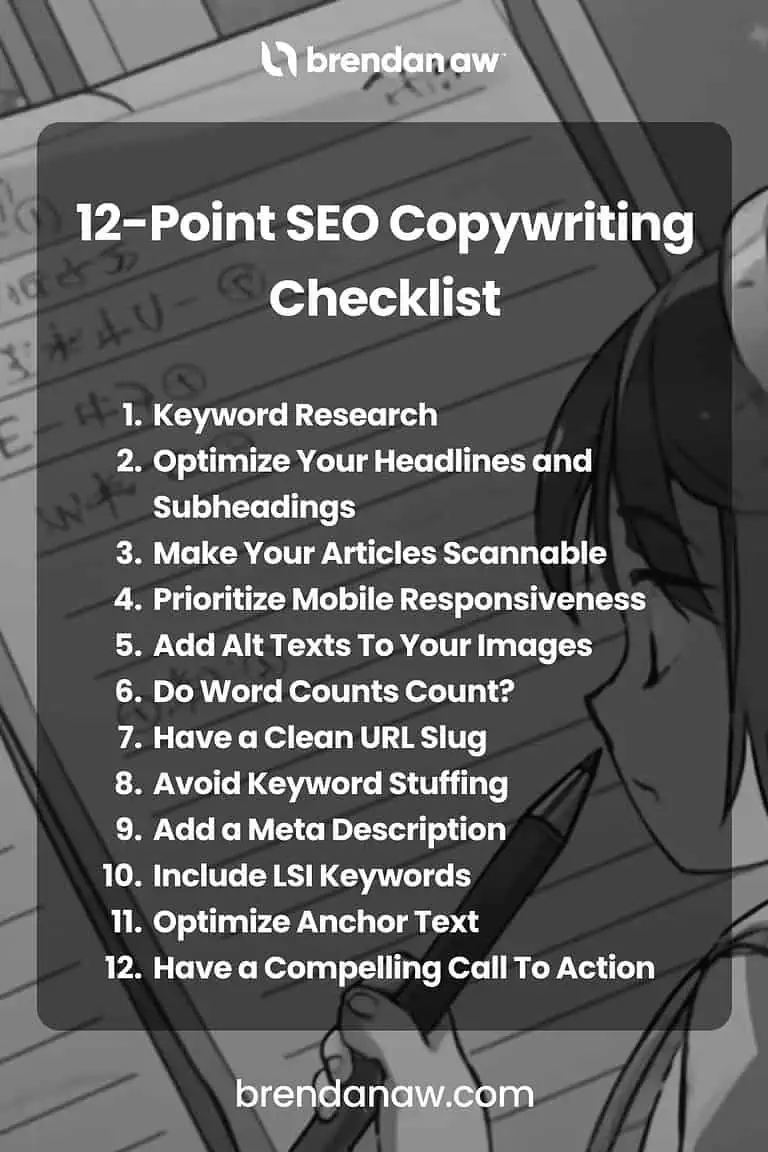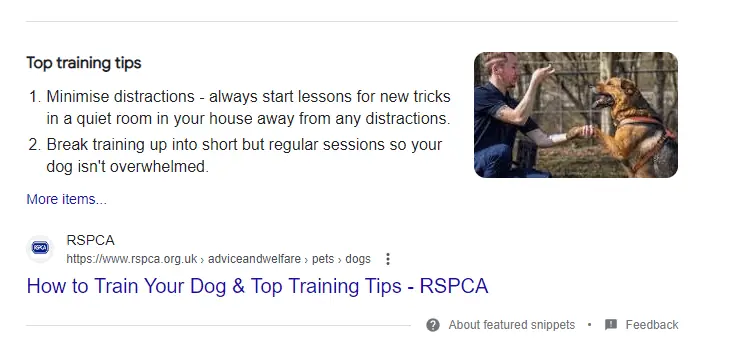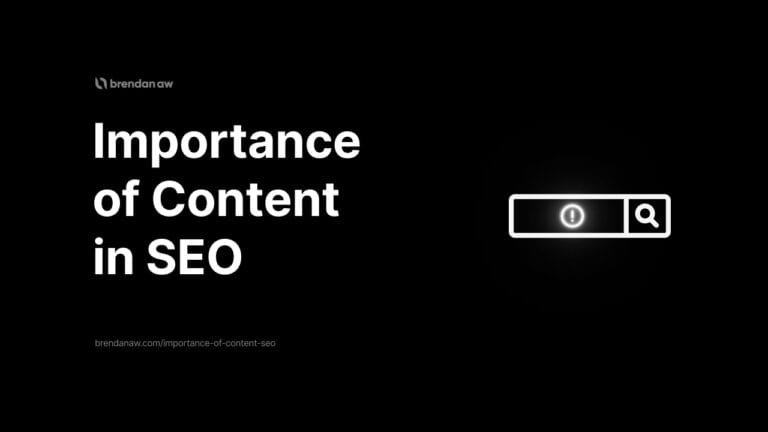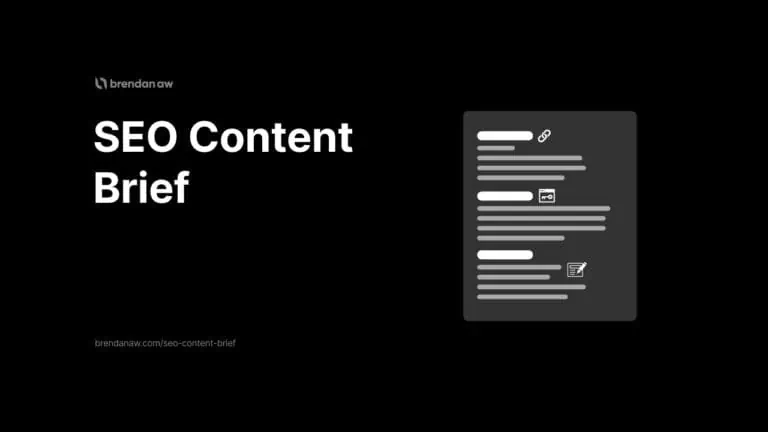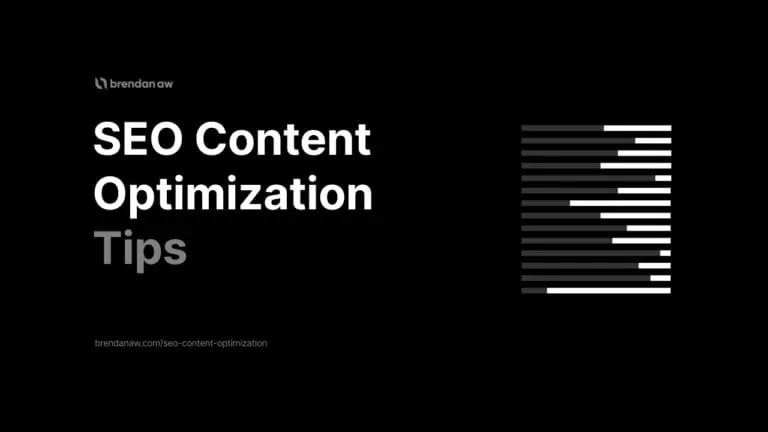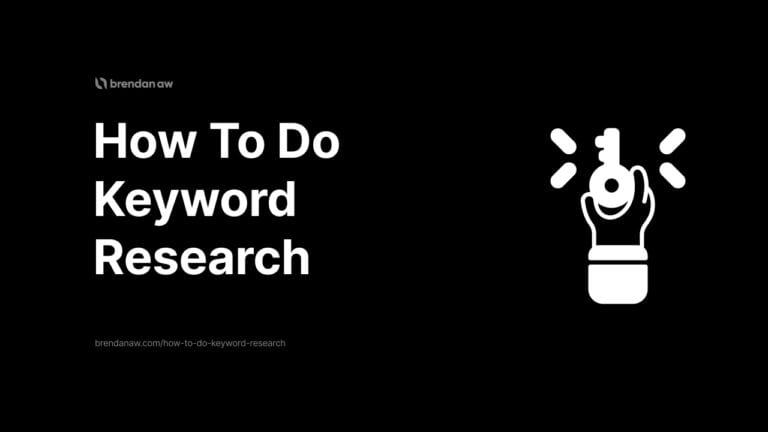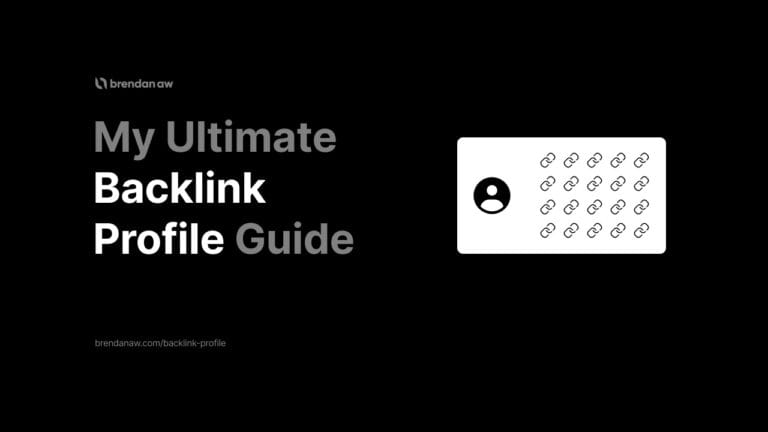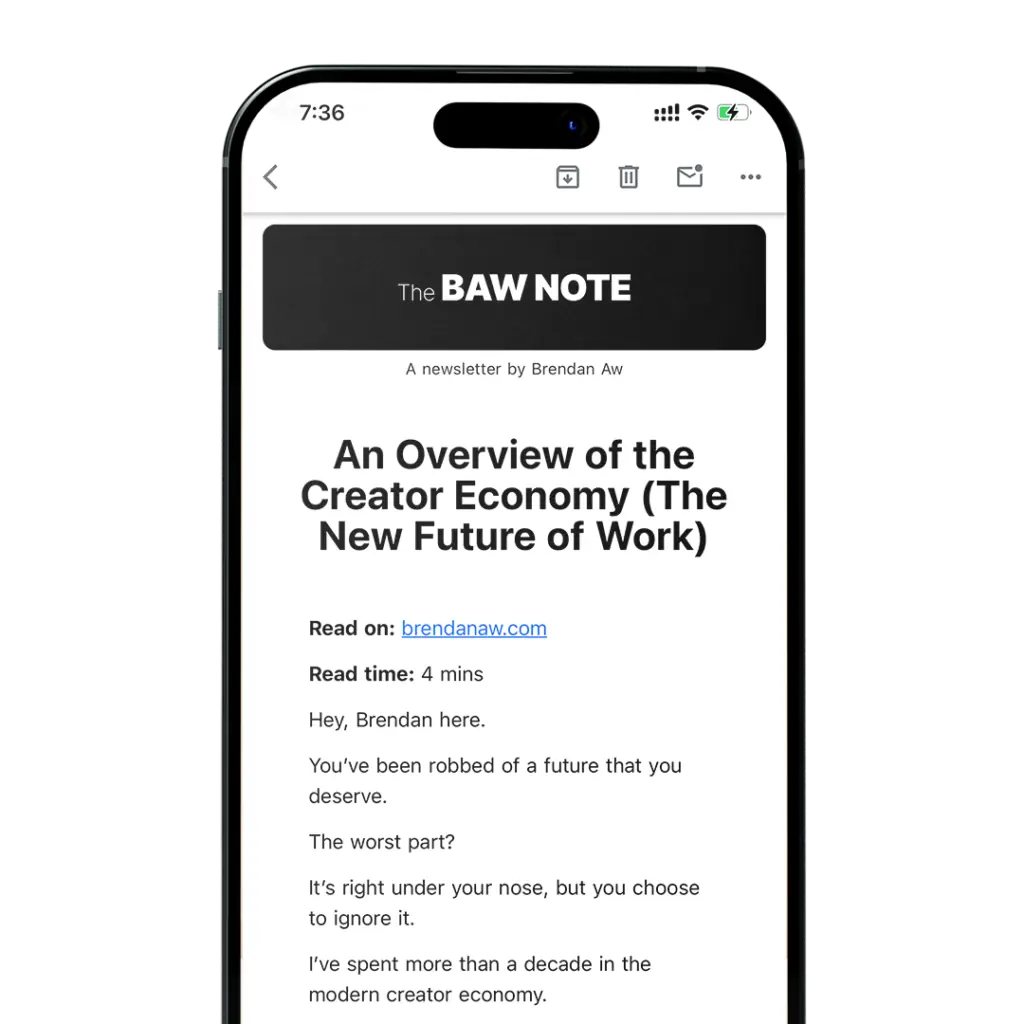What’s the use of writing valuable and informative content if no one finds or is influenced by it?
Sounds like a waste of time and money to me.
And if you are wondering how to please both humans and robots…
You’ve come to the right place.
This SEO copywriting checklist will help you:
- Optimize for search engines
- Compel readers to take action
- Provide value-packed information
It’s your last defense before clicking “Publish.”
Let’s jump in.
What Are the Items in the SEO Copywriting Checklist?
Here are the 12 things you must check before publishing your next blog post.
- Keyword Research
- Optimize Your Headlines and Subheadings
- Make Your Articles Scannable
- Prioritize Mobile Responsiveness
- Add Alt Texts To Your Images
- Do Word Counts Count?
- Have a Clean URL Slug
- Avoid Keyword Stuffing
- Add a Meta Description
- Include LSI Keywords
- Optimize Anchor Text
- Have a Compelling Call To Action
1. Keyword Research
Keyword research is the foundation of every solid SEO strategy.
Put the guesswork to the side because there is no use in writing the most comprehensive guide to something that people don’t care about.
How can I search for keywords?
It’s easier to find relevant keywords if you start placing yourself in the shoes of your target readers.
Ask yourself these questions:
What do I mean by that?
Let’s say the key phrase you have is “how to train a dog”.
Most people searching this term wants to know how they can train their dog easily, fast, and effectively.
So instead of boring the heck out of your readers by telling the history of dog training, answer the search intent of the reader and you should come up with an article similar to this.
This is the current rank 1 for this topic. Notice how it answers the search intent of dog training effectively by saying “Top training tips”.
Staying relevant to the real meaning behind the search will help you rank higher on the search engine results page.
2. Optimize Your Headlines and Subheadings
Your blog’s title is like your thumbnail on YouTube. But aside from alluring your readers to read your content, it also helps search engines crawl over your content and show it to your target audience.
Here are the best ways to improve your titles
- Keyword-rich Headlines: Your H1 and H2 headers need to include the keyword because don’t forget Google is a bot and doesn’t understand what you are writing about. It crawls your landing page copy and makes connections using keyword entities to figure that out.
- Length: Google’s SERP shows about 50-60 characters of your title. The best practice is to keep your H1 under 60 characters so it won’t get cut off in the SERPs.
- Use an Odd-Numbers: This does not affect the SEO right away but titles that start with odd numbers are much more effective than an even-numbered title. Studies show that odd numbers are more believable to readers. This is ideal for listicles (articles based on lists). But remember to use this ONLY when it fits. Don’t compromise the value of your article to follow this tip.
- Use Power Words: Power words are used to invoke strong emotion and compel readers to take action. In this case, you only have a few letters to earn that click.
You can read my article on copywriting exercises if you need some guidance.
3. Make Your Articles Scannable
Readers DO NOT read every word in your article.
People just don’t have time for that and want answers to our questions in 5 seconds.
That’s why it’s important to prioritize user experience and ensure your content is readable. Here are my go-to tips for maximum readability.
- Avoid walls of text – For web content, no one likes those big blocks of text. STAY AWAY from them. A good rule of thumb is separate 1 to 2-sentence paragraphs by a line break. Observe how I structured the paragraphs in this article.
- Add subheadings – Subheadings are a great way to separate each section of your article. Not only does adding them cut down the wall of text, but this will also help your readers navigate your article.
- Use bullet points and lists – Avoid using commas. If you want to enumerate 3 or more ideas, use a bullet or a numbered list instead.
4. Prioritize Mobile Responsiveness
Google claimed that they are mainly using mobile versions of websites for indexing and ranking.
Writing copy that is mobile responsive is getting more and more important.
People nowadays are using their smartphones to surf the web. And if you want to give the best user experience to as many readers as possible…
Prioritize. Mobile. Responsiveness.
5. Add Alt Texts To Your Images
Adding images is a great way to spice up your content and break walls of text. But most people forget to add an alt text. Little do they know that alt texts can help their blogs rank higher.
Don’t be one of those people.
Alt text or alternative text are short descriptions of an image. Its main purpose is to provide a text description if the image is for visually impaired people or when the website fails to load.
But how can it improve SEO?
Search engines find it harder to interpret your image if it does not have text descriptions to it.
Not only that. You’re also missing an opportunity to get your image to show in Google’s images tab.
And depending on the length of the article, I tend to include an image every 300-500 words or so to keep things interesting.
6. Do Word Counts Count?
Okay, for the million-dollar question…
Does word count matter for search engine optimization?
John Mueller from Google disapproved of this claim by saying, “Just blindly adding text to a page doesn’t make it better.”
Google doesn’t care about word counts. Does that mean I can publish 200-word articles?
I hope so. But that’s not the case either.
Google does not rank articles based on word count. But there is a correlation between high-ranking articles and longer articles.
This is because longer articles tend to answer more questions of the reader. They can end the reader’s search with that single article instead of bouncing the reader to another. They tend to provide more value.
Most probably, a 2000-word in-depth article will answer more of the reader’s question than a 200-word article.
So what can you learn from this?
The next time you worry about your word count, IMMEDIATELY change your perspective and aim to provide as much value as you can. Let the word count take care of itself.
7. Have a Clean URL Slug
URL slug is the latter part of your blog’s link. This serves as the unique identifier of your blog.
John Mueller said in an interview that words in a URL are a very light ranking factor…
But he said that this is primarily what they would consider when they haven’t had access to your content yet. So having a clean URL slug will only do you good.
How can I make my URL clean?
Before we proceed, this is what a dirty URL looks l like.
https://brendanaw.com/?p=4774And this is what a clean URL Slug looks like.
https://brendanaw.com/seo-copywriting-checklistNotice the difference? Here are some URL slug best practices that I follow:
- Use concise and descriptive language
- Add “-” in between words (e.g. seo-copywriting-checklist)
- DO NOT use emojis, and avoid special characters
- All lowercase letters
- Don’t include numbers
8. Avoid Keyword Stuffing
This is the BIGGEST mistake every beginner SEO writer makes.
Search engines are much more sophisticated nowadays, and stuffing keywords will do you more harm than good.
In fact, doing this can get you penalized, and your article will no longer see the light of the next day.
If that’s not enough, your article will also sound UNNATURAL. Readers will notice and hate that.
What happens when readers don’t find your content relevant or helpful?
Say goodbye to page 1 and look up your content on page 17.
Ensure that you’re only adding primary keywords when necessary.
Add it in the following places:
- URL
- H1
- Variations in the H2s and body
- Meta description
You MUST avoid keyword stuffing at all times.
Focusing on providing value is much more efficient, and the more people find your blog helpful, the higher your article ranks.
9. Add a Meta Description
Meta descriptions are NOT a direct ranking factor.
Google actually rewrites it all the time.
But it can influence your content’s ranking in Google’s SERP in various ways. Here are some of them:
- Adding your primary keyword in the meta description helps search engines understand what your content is about.
- Meta descriptions entice your readers to read. The study shows that 62.9% of respondents said that meta-description was the dominant influence that made them click on an article.
How can I write compelling meta descriptions?
- Use your primary keyword to show your content’s relevance to your readers
- Entice your readers by writing a compelling description
- Include latent semantic indexing (LSI) keywords
10. Include LSI Keywords
Relevance is key to ranking higher in search engine results.
And one way to be more relevant? Include not only your target keyword but also relevant keywords.
These are called Latent Semantic Indexing (LSI) keywords or key phrases. And they help Google strengthen your relevance to your keyword.
How can I add LSI keywords to my content?
There are several ways to search for LSI keywords. I’ll show you a few applications to INSTANTLY search for related keywords.
- Keyword Planner: A tool from Google that will help you discover new and related keywords to your topic
- LSIGraph: Generate a list of keywords in seconds. LSIGraph will help you write SEO content that will drive traffic
- Google Search: The good old Google SERP has the most relevant keywords for your topic. Look in the “People also ask” section, meta descriptions of the top articles, and related searches at the bottom.
- Content Optimizers: If you got the budget, you could always make your life easier by using a tool like NeuronWriter or Surfer SEO to tell you exactly which keywords to include.
11. Optimize Anchor Text
This is one area where many SEOs and copywriters fail to optimize.
They might even take it for granted.
Here are some best practices for optimizing your anchor text:
- Be Succinct: You must figure out the best way to be descriptive while implementing copywriting frameworks that earn clicks.
- Anchor Text Keyword Density: Ever since the Google Penguin update, the algorithm has been rather stringent on webmasters using exact same anchor text as it’s a sign that it was naturally obtained.
- Ensure Link Relevancy: This is usually a problem for amateur writers and SEOs who can’t grasp that the anchor text should be relevant to the page it’s linking to. Just make sure it makes sense. It’s not rocket science.
12. Have a Compelling Call To Action
Include a strong call-to-action that encourages users to take a desired action.
This could be:
- Clicking on an affiliate link
- Subscribing to your newsletter
- Book a consulting call
- Downloading a resource
Or whatever your offer is…
And this is where direct response copywriting shines to produce an immediate result.
This not only improves user experience but also increases the chances of conversions.
What Is an SEO Copywriting Checklist?
An SEO copywriting checklist is a guide to optimize written copy for search engines and engage readers. It includes a combination of various copywriting and SEO best practices to increase visibility and conversions.
It ensures your content is:
- Discoverable by search engines
- Provides value to readers
- Encourages desired actions
It’s basically a perfect blend of both worlds.
Why Do You Need an SEO Copywriting Checklist?
Here are some reasons why you need an SEO copywriting checklist:
1. Guide Your SEO Content to The First Page
Ranking on Google’s first page is obviously the goal of every SEO strategy.
Think about this for a second…
When was the last time you searched for something, didn’t find the answer you were looking for, then clicked on page 2 of Google’s search results?
If you’re a normal human being, chances are you returned to the search bar and changed your target keyword.
This is what most people do.
To back this up, a Backlinko study showed only 0.63% of Google searchers clicked on something from the second page.
So your articles must rank on the first page of Google, and that’s what an SEO checklist will help you to do.
That’s why the saying “the best place to hide a dead body is on the second page of Google” became so popular.
2. Help You Get That Organic Traffic
Imagine you’re selling THE BEST tacos in town, but you are 5 blocks away from the main road.
Your competitor Bob is selling a decent-tasting taco at best.
But he is in front of the main street, and people automatically stop by his store.
Nevertheless, you’ve come up with a buy-one-take-one discount for your buyers. You think it’s working because few people walked a long distance to get your tacos.
But the promotion is not sustainable, so you stopped the offer. Suddenly all your customers are now munching on Bob’s tacos once again.
That pictures a business model that relies on ads compared to a business with organic traffic.
An SEO checklist will help you produce quality content to get that search traffic.
3. A More Consistent Content Strategy
Consistency is vital for building brand image.
Especially if you’re working with a copywriter, having an SEO copywriting checklist is the best way to set your standards and ensure you’re working on the same page.
4. Avoid Cheap Mistakes
Following an SEO checklist will help you avoid small errors that shouldn’t be there in the first place. Broken links, grammar errors, and irrelevant headings would negatively impact user experience, but you can easily avoid them by running through a checklist before posting.
To Sum Up
SEO Copywriting Checklist lists best practices for writing content for search engines.
It’s essential for optimizing your meta tags so it appears in the SERP and reaches more people.
Yes, AI SEO tools can help you crank up an optimized article in a few seconds.
But it still wouldn’t hurt if you reviewed this checklist before publishing your work.
And always remember who you’re writing this for…
Readers first. Search engines second.
That’s it from me.
Hope you liked this SEO copywriting checklist, and please use this before you publish your next blog post!


